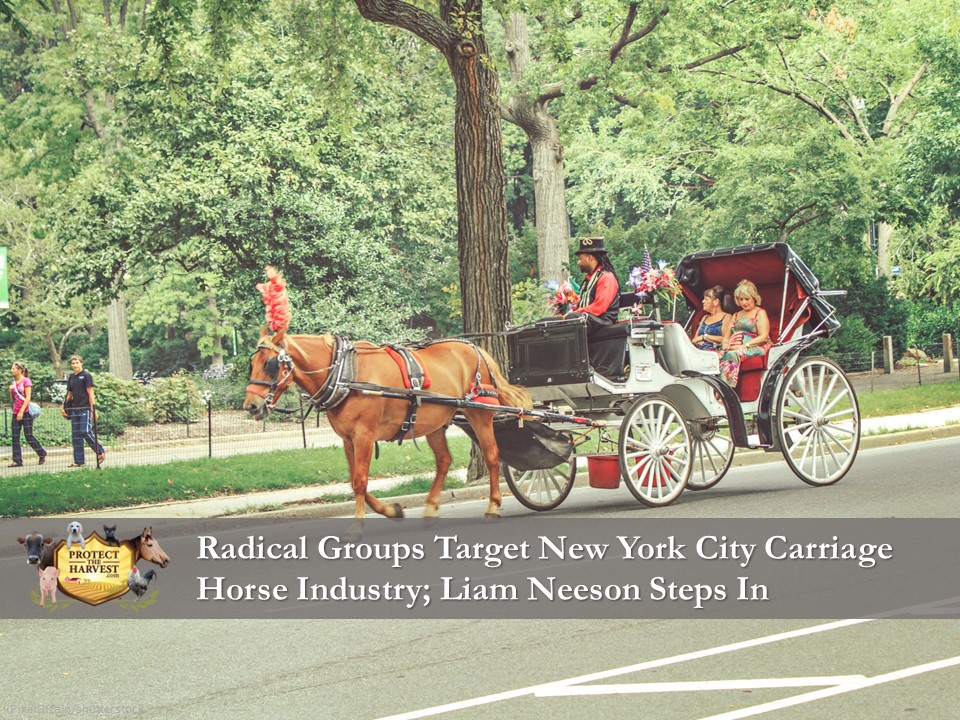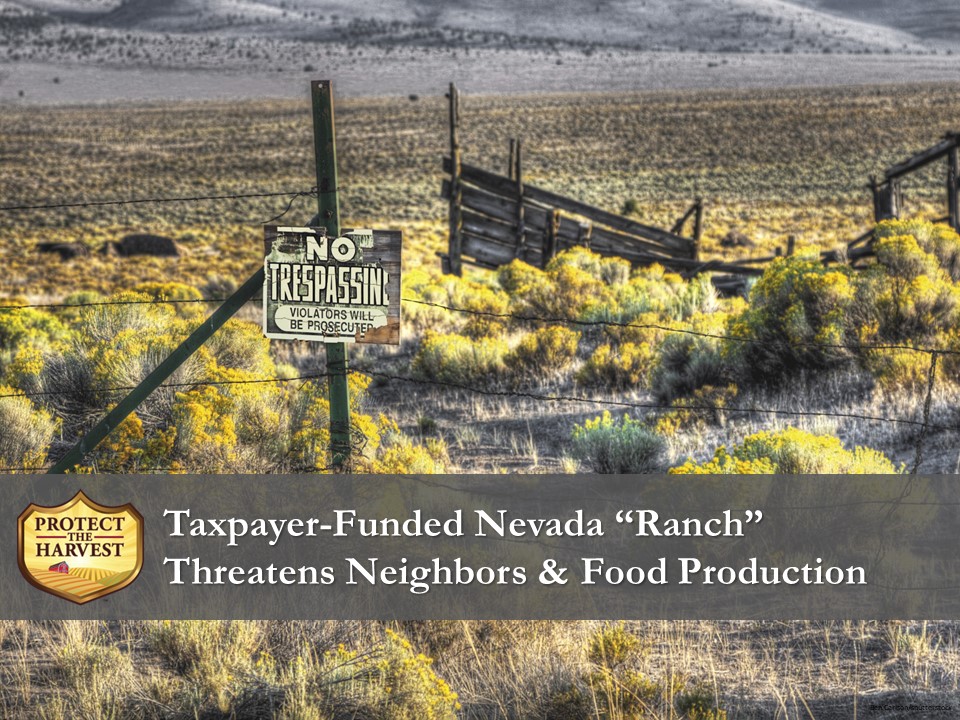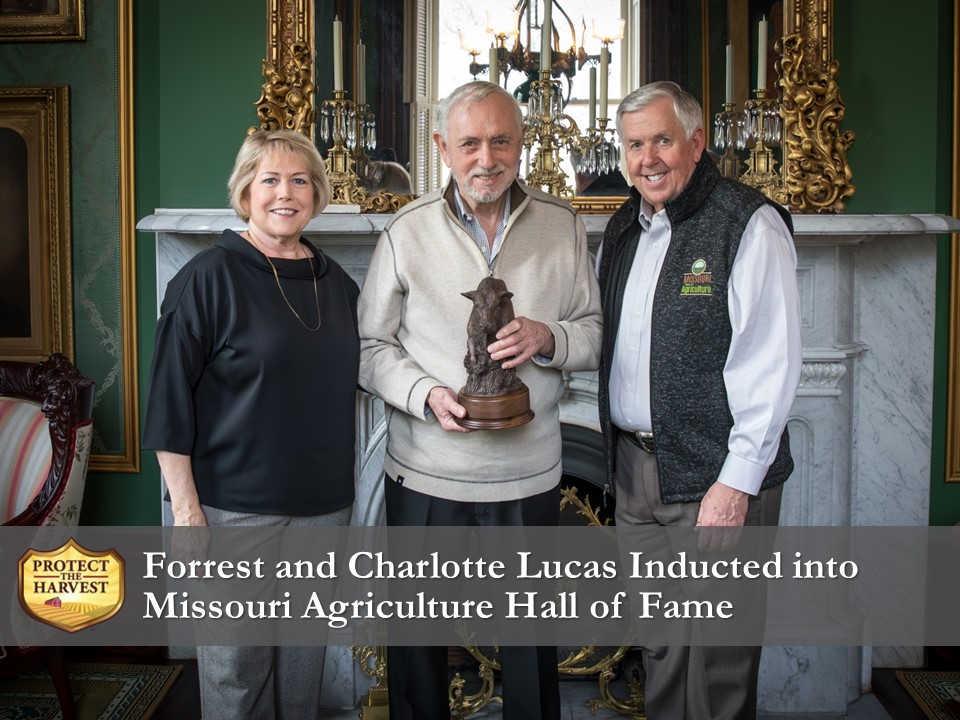HSUS, PETA, and other animal rights groups are working all across the nation to eliminate the horse-drawn carriage industry.
The New York City carriage horse industry has been one of HSUS, PETA, and other animal rights groups’ primary targets in the past few years, albeit still unsuccessful. The long standing tradition of horse-carriage rides through the city and Central Park is one of the many notable city attractions.
In November 2013, Bill De Blasio, former New York City Councilman, was elected mayor.
Over the course of time, De Blasio payed close attention to the animal rights machine, realizing the potential, not because he believed it was the right thing to do, but that he could stand to benefit financially from their support in his bid for mayor.
During his campaign, he made a promise to make one of the first things on his agenda to ban the carriage horse industry because “it is inhumane.” But this is in sharp contrast to his opinion on the matter just a few years prior. In 2009, as a city councilman, he did not support a similar ban. During his time on the NY City Council, he had the opportunity to put his name on two different bills (Intro 653 and Intro 658) but refused to do so. Both of these bills would have placed a ban on horse-drawn carriages in the city, but both bills died at the end of 2009.
So what happened between 2009 and 2011 that he changed his position so drastically? That question can be answered by following the money.
A trail of green can be linked from Bill De Blasio back to many animal rights groups. One of the more prominent groups involved in his decision is New Yorkers for Clean, Livable and Safe Streets (NYCLASS), a group co-founded by Steve Nislick in 2008. NYCLASS has led the charge against the use of horse carriages. Nislick first donated money to De Blasio’s campaign in 2010 and his group has been responsible for millions of dollars in various campaign contributions. Did the support of De Blasio for Mayor come with the promise that he would end the horse-carriage system?
Steve Nislick may have had ulterior motives as well. According to New York author and journalist Michael Gross, he had a vested business interest in removing the horse-carriage system from New York City. Nislick is CEO of Edison Properties, a real estate development company that operates in Manhattan and has multiple properties in the same neighborhood as the stables where Central Park horses reside. With those stables out of business, Edison Properties could grab that land for themselves.
The usual ringleaders such as PETA and HSUS are also behind the push to ban horse carriages, once again using arguments that aren’t supported by science. The mythmaking has only served to rope in members of the general public who haven’t researched the issue and are easily swayed by emotional plight.
Many of these myths include:
– The lives of these horses are harsh, overworked, and short-lived.
– They are exposed to extreme weather and toxic fumes from traffic during their workday.
– They are not given an adequate amount of food and water throughout the day.
– Their stables are crowded and unsanitary.
– These horses do not live fulfilling lives, and so they become depressed and perhaps even unpredictable in their public behavior.
Taken at face value, those accusations may sound well researched, but they are not.
De-bunking all of them requires only a simple explanation based in fact. According to Blue Star Equiculture, these horses do live long, fulfilling lives. Most live in the horse-carriage industry for 10-15 years, after which they are retired to private facilities where they are cared for until the end of their lives. Additionally, they are protected from harsh weather by natural adaptability, and are consistently fed and watered throughout the day at several stations near Central Park.
Their legs and joints are cared for with specially made horseshoes, and they only work at a walking pace. When Central Park was first designed, it was built for horse-carriages, so the roads are comfortable and low-impact.
Stalls that they are housed in provide adequate spacing and allow for interaction with other horses. The stalls are cleaned multiple times per day, because if they weren’t it would be a city violation. Inspectors visit the stables frequently, assuring that living conditions are up to standard.
Finally, these horses are conditioned to the urban environment. They do not get spooked by traffic or loud noises. Extensive training prepares them for city conditions.
Unfortunately, these sound defenses mean nothing to animal rights groups. They say that horses don’t belong in this environment and that it’s a form of animal cruelty. Their voices are heard because they have the financial backing and the notoriety to get their message out.
Recently, however, one man has lent his name, celebrity, and efforts to the pro-horse-carriage cause: Liam Neeson. An avid horse enthusiast, he shows appreciation and respect for the animals while simultaneously providing excellent arguments in favor of horse-carriages. Dedicating a great deal of his time to supporting the industry. Neeson has gone on several talk shows, spoken publicly, and has written extensively on the issue.
In an op-ed for The NY Daily News, he writes, “Horses and their caretakers work together to earn a decent livelihood in New York, as they have for hundreds of years. New York’s horse-carriage trade is a humane industry that is well regulated by New York City’s Departments of Health and Mental Hygiene and Consumer Affairs. Harry W. Werner, a past president of the American Association of Equine Practitioners, has visited the stables and ‘found no evidence whatsoever of inhumane conditions, neglect or cruelty in any aspect.’”
He goes on to say, “Every horse must be licensed and pass a physical examination by a veterinarian twice a year; typically, the horses spend about six hours per day in the park. They cannot work in excessive cold or heat, and must also be furloughed for five weeks a year on a pasture in the country.”
“A majority of carriage drivers and stable hands are recent immigrants, often raised on farms in their home countries. They love their jobs and their horses, and they take pride in being ambassadors for this great city. I can’t help but see the proposed ban as a class issue: Their livelihoods are now at risk because the animal-rights opponents of the industry are well funded by real-estate interests, which has led to speculation that this powerful lobby wishes to develop the West Side properties occupied by the stables.”
For his efforts, Liam Neeson has been verbally assaulted by animal rights extremists, who have protested outside his home in New York City.
We applaud Mr. Neeson for standing up for what he strongly believes in, while also using sound logic against an opponent that only has emotional accusations to make.
We encourage you to show your support for the NYC carriage industry and join the fight against radical animal rights groups.
To learn more, visit www.savenyhorsecarriages.com




